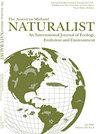Satellite Tracking Data Reveals High-Use Areas for Immature Bald Eagles from Kentucky
IF 0.6
4区 环境科学与生态学
Q4 Agricultural and Biological Sciences
引用次数: 1
Abstract
Abstract. Immature raptors often travel long distances and move nomadically from the time they leave their natal area to the time they are recruited into the breeding population. Emphasis on identifying the nesting and winter habitat of Bald Eagles (Haliaeetus leucocephalus) has overshadowed the need to understand the habitat and spatial use of young eagles prior to reaching maturity. We used satellite telemetry to track the movements of immature Bald Eagles hatched in western Kentucky during 2010–2016. We analyzed movement data to identify high-use areas for eagles in their first and second years during warm and cool periods. Five out of seven eagles migrated north to the Great Lakes region during their first year. Using Brownian Bridge Movement Modelling, we identified 47 noncontiguous high-use areas during the warm period and 67 during the cool period. Public lands comprised 17% of warm period high-use areas and 43% of cool period high-use areas. High-use areas were located in Illinois, Indiana, Kentucky, Arkansas and Tennessee, and were often near federally-owned dams, rivers with sandbars, or areas with abundant waterfowl. Our small sample of tracked eagles correctly identified known Bald Eagle concentration areas within the study area; thus, we infer that previously unrecognized high-use areas identified by this study are likely to be concentration areas important to the larger population. We further suggest remote sensing data, even in limited datasets, as an efficient way to identify Bald Eagle concentration areas.卫星追踪数据揭示了肯塔基州未成熟秃鹰的高使用区域
摘要未成熟的迅猛龙从离开出生地到被招募到繁殖群体之间,通常会进行长距离和游牧式的迁徙。对白头海雕(halaeetus leucocephalus)筑巢和冬季栖息地的重视,掩盖了对雏鹰成熟前栖息地和空间利用的了解。我们使用卫星遥测技术追踪了2010-2016年在肯塔基州西部孵化的未成熟秃鹰的活动。我们分析了运动数据,以确定鹰在温暖和凉爽时期的第一年和第二年的高使用区域。七只鹰中有五只在第一年就向北迁徙到五大湖地区。利用布朗桥运动模型,我们在温暖期确定了47个不连续的高利用区,在寒冷期确定了67个。公共土地占暖期高利用区17%,冷期高利用区43%。高利用率地区位于伊利诺斯州、印第安纳州、肯塔基州、阿肯色州和田纳西州,通常靠近联邦政府拥有的水坝、有沙洲的河流或有大量水禽的地区。我们的小样本追踪鹰正确地识别出研究区域内已知的白头鹰集中区;因此,我们推断,本研究确定的以前未被认识到的高利用区域可能是对更大人口重要的集中区域。我们进一步建议,即使在有限的数据集中,遥感数据也可以作为识别白头鹰集中区的有效方法。
本文章由计算机程序翻译,如有差异,请以英文原文为准。
求助全文
约1分钟内获得全文
求助全文
来源期刊

American Midland Naturalist
环境科学-生态学
CiteScore
1.20
自引率
0.00%
发文量
38
审稿时长
18-36 weeks
期刊介绍:
The American Midland Naturalist has been published for 90 years by the University of Notre Dame. The connotations of Midland and Naturalist have broadened and its geographic coverage now includes North America with occasional articles from other continents. The old image of naturalist has changed and the journal publishes what Charles Elton aptly termed "scientific natural history" including field and experimental biology. Its significance and breadth of coverage are evident in that the American Midland Naturalist is among the most frequently cited journals in publications on ecology, mammalogy, herpetology, ornithology, ichthyology, parasitology, aquatic and invertebrate biology and other biological disciplines.
 求助内容:
求助内容: 应助结果提醒方式:
应助结果提醒方式:


